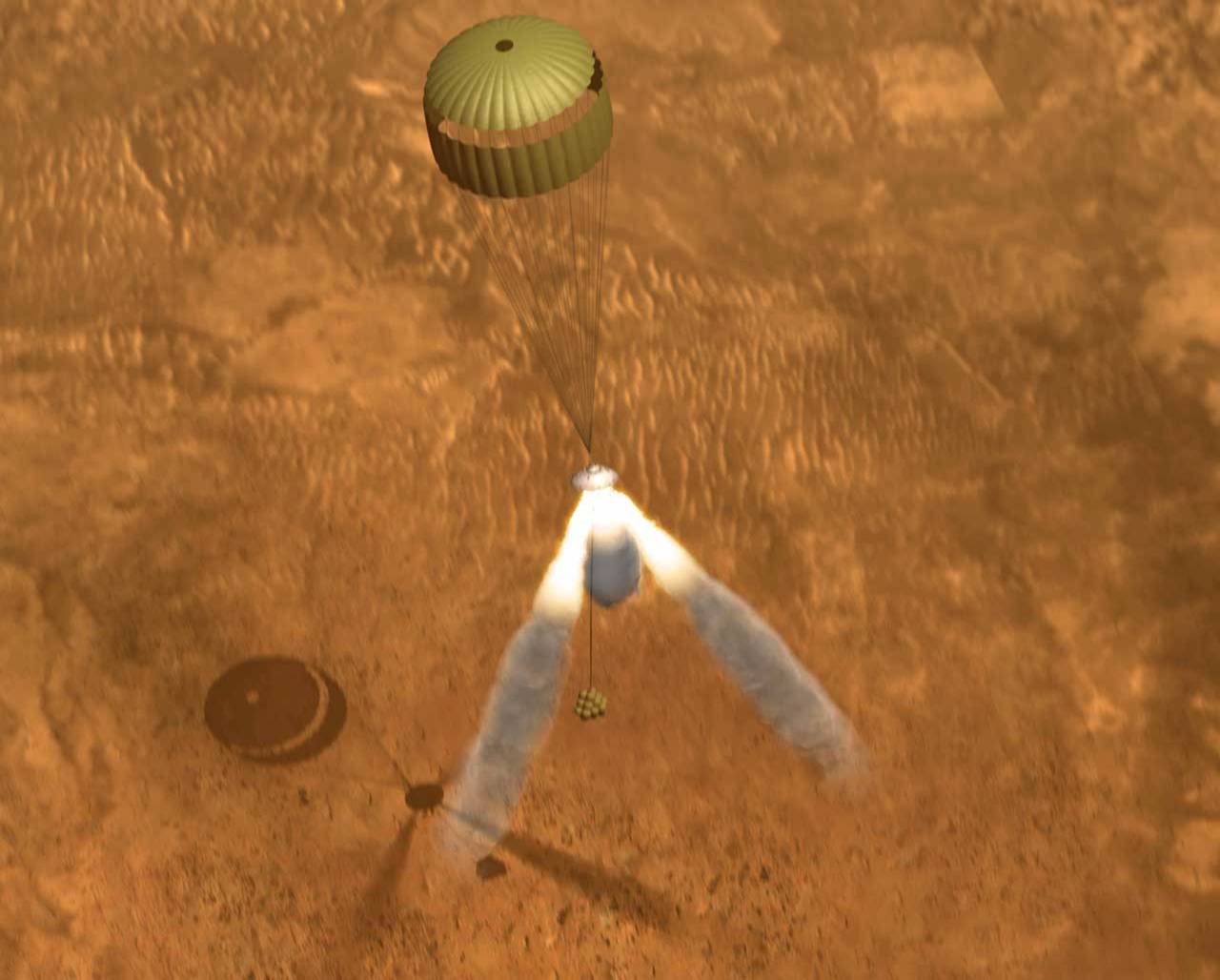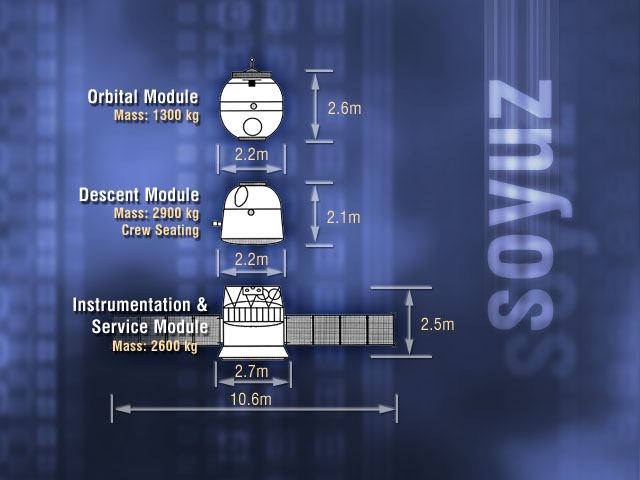|
Deorbit
Atmospheric entry (sometimes listed as Vimpact or Ventry) is the movement of an object from outer space into and through the gases of an atmosphere of a planet, dwarf planet, or natural satellite. Atmospheric entry may be ''uncontrolled entry,'' as in the entry of astronomical objects, space debris, or bolides. It may be ''controlled entry'' (or ''reentry'') of a spacecraft that can be navigated or follow a predetermined course. Methods for controlled atmospheric ''entry, descent, and landing'' of spacecraft are collectively termed as ''EDL''. Objects entering an atmosphere experience Drag (physics), atmospheric drag, which puts mechanical stress on the object, and aerodynamic heating—caused mostly by compression of the air in front of the object, but also by drag. These forces can cause loss of mass (ablation) or even complete disintegration of smaller objects, and objects with lower compressive strength can explode. Objects have reentered with speeds ranging from 7.8&n ... [...More Info...] [...Related Items...] OR: [Wikipedia] [Google] [Baidu] |
Space Debris
Space debris (also known as space junk, space pollution, space waste, space trash, space garbage, or cosmic debris) are defunct human-made objects in spaceprincipally in Earth orbitwhich no longer serve a useful function. These include derelict spacecraft (nonfunctional spacecraft and abandoned launch vehicle stages), mission-related debris, and particularly numerous in-Earth orbit, fragmentation debris from the breakup of derelict rocket bodies and spacecraft. In addition to derelict human-made objects left in orbit, space debris includes fragments from disintegration, erosion, or collisions; solidified liquids expelled from spacecraft; unburned particles from solid rocket motors; and even paint flecks. Space debris represents a risk to spacecraft. Space debris is typically a negative externality. It creates an external cost on others from the initial action to launch or use a spacecraft in near-Earth orbit, a cost that is typically not taken into account nor fully accoun ... [...More Info...] [...Related Items...] OR: [Wikipedia] [Google] [Baidu] |
Retrorocket
A retrorocket (short for ''retrograde rocket'') is a rocket engine providing thrust opposing the motion of a vehicle, thereby causing it to decelerate. They have mostly been used in spacecraft, with more limited use in short-runway aircraft landing. New uses are emerging since 2010 for retro-thrust rockets in reusable launch systems. History Rockets were fitted to the nose of some models of the DFS 230, a World War II German Military glider. This enabled the aircraft to land in more confined areas than would otherwise be possible during an airborne assault. Another World War II development was the British Hajile project, initiated by the British Admiralty's Directorate of Miscellaneous Weapons Development. Originally a request from the British Army as a method to drop heavy equipment or vehicles from aircraft flying at high speeds and altitudes, the project turned out to be a disaster and was largely forgotten after the war. Although some of the tests turned out to be succe ... [...More Info...] [...Related Items...] OR: [Wikipedia] [Google] [Baidu] |
Reentry Video As Orion Returns From Artemis I
Atmospheric entry (sometimes listed as Vimpact or Ventry) is the movement of an object from outer space into and through the gases of an atmosphere of a planet, dwarf planet, or natural satellite. Atmospheric entry may be ''uncontrolled entry,'' as in the entry of astronomical objects, space debris, or bolides. It may be ''controlled entry'' (or ''reentry'') of a spacecraft that can be navigated or follow a predetermined course. Methods for controlled atmospheric ''entry, descent, and landing'' of spacecraft are collectively termed as ''EDL''. Objects entering an atmosphere experience atmospheric drag, which puts mechanical stress on the object, and aerodynamic heating—caused mostly by compression of the air in front of the object, but also by drag. These forces can cause loss of mass (ablation) or even complete disintegration of smaller objects, and objects with lower compressive strength can explode. Objects have reentered with speeds ranging from 7.8 km/s for l ... [...More Info...] [...Related Items...] OR: [Wikipedia] [Google] [Baidu] |
Kármán Line
The Kármán line (or von Kármán line ) is a conventional definition of the Outer space#Boundary, edge of space; it is widely but not universally accepted. The international record-keeping body Fédération Aéronautique Internationale, FAI (Fédération aéronautique internationale) defines the Kármán line at an altitude of above above mean sea level, mean sea level. While named after Theodore von Kármán, who calculated a theoretical limit of altitude for aeroplane flight at above Earth, the later established Kármán line is more general and has no distinct physical significance, in that there is a rather gradual difference between the characteristics of the atmosphere at the line, and experts disagree on defining a distinct boundary where the atmosphere ends and space begins. It lies well above the altitude reachable by conventional airplanes or high-altitude balloons, and is approximately where satellites, even on very eccentric trajectories, will Orbital decay, dec ... [...More Info...] [...Related Items...] OR: [Wikipedia] [Google] [Baidu] |
Buoyancy
Buoyancy (), or upthrust, is the force exerted by a fluid opposing the weight of a partially or fully immersed object (which may be also be a parcel of fluid). In a column of fluid, pressure increases with depth as a result of the weight of the overlying fluid. Thus, the pressure at the bottom of a column of fluid is greater than at the top of the column. Similarly, the pressure at the bottom of an object submerged in a fluid is greater than at the top of the object. The pressure difference results in a net upward force on the object. The magnitude of the force is proportional to the pressure difference, and (as explained by Archimedes' principle) is equivalent to the weight of the fluid that would otherwise occupy the submerged volume of the object, i.e. the Displacement (fluid), displaced fluid. For this reason, an object with average density greater than the surrounding fluid tends to sink because its weight is greater than the weight of the fluid it displaces. If the objec ... [...More Info...] [...Related Items...] OR: [Wikipedia] [Google] [Baidu] |
Meteor
A meteor, known colloquially as a shooting star, is a glowing streak of a small body (usually meteoroid) going through Earth's atmosphere, after being heated to incandescence by collisions with air molecules in the upper atmosphere, creating a streak of light via its rapid motion and sometimes also by shedding glowing material in its wake. Although a meteor may seem to be a few thousand feet from the Earth, meteors typically occur in the mesosphere at altitudes from . The root word ''meteor'' comes from the Ancient Greek, Greek ''meteōros'', meaning "high in the air". Millions of meteors occur in Earth's atmosphere daily. Most meteoroids that cause meteors are about the size of a grain of sand, i.e. they are usually millimeter-sized or smaller. Meteoroid sizes can be calculated from their mass and density which, in turn, can be estimated from the observed meteor trajectory in the upper atmosphere. Meteors may occur in meteor shower, showers, which arise when Earth passes throu ... [...More Info...] [...Related Items...] OR: [Wikipedia] [Google] [Baidu] |
Hyperbolic Trajectory
In astrodynamics or celestial mechanics, a hyperbolic trajectory or hyperbolic orbit is the trajectory of any object around a central body with more than enough speed to escape the central object's gravitational pull. The name derives from the fact that according to Newtonian theory such an orbit has the shape of a hyperbola. In more technical terms this can be expressed by the condition that the orbital eccentricity is greater than one. Under simplistic assumptions a body traveling along this trajectory will coast towards infinity, settling to a final excess velocity relative to the central body. Similarly to parabolic trajectories, all hyperbolic trajectories are also escape trajectories. The specific energy of a hyperbolic trajectory orbit is positive. Planetary flybys, used for gravitational slingshots, can be described within the planet's sphere of influence using hyperbolic trajectories. Parameters describing a hyperbolic trajectory Like an elliptical orbit, a hyp ... [...More Info...] [...Related Items...] OR: [Wikipedia] [Google] [Baidu] |
Soyuz (spacecraft)
Soyuz () is a series of spacecraft which has been in service since the 1960s, having made more than 140 flights. It was designed for the Soviet space program by the Korolev Design Bureau (now Energia (corporation), Energia). The Soyuz succeeded the Voskhod spacecraft and was originally built as part of the Soviet crewed lunar programs. It is launched atop the similarly named Soyuz (rocket family), Soyuz rocket from the Baikonur Cosmodrome in Kazakhstan. Following the Soviet Union's dissolution, Roscosmos, the Russian space agency, continued to develop and utilize the Soyuz. Between the Space Shuttle retirement, Space Shuttle's 2011 retirement and the SpaceX Crew Dragon's 2020 debut, Soyuz was the sole means of crewed transportation to and from the International Space Station, a role it continues to fulfill. The Soyuz design has also influenced other spacecraft, including China's Shenzhou (spacecraft), Shenzhou and Russia's Progress (spacecraft), Progress cargo vehicle. The Soyu ... [...More Info...] [...Related Items...] OR: [Wikipedia] [Google] [Baidu] |
Orbit
In celestial mechanics, an orbit (also known as orbital revolution) is the curved trajectory of an object such as the trajectory of a planet around a star, or of a natural satellite around a planet, or of an artificial satellite around an object or position in space such as a planet, moon, asteroid, or Lagrange point. Normally, orbit refers to a regularly repeating trajectory, although it may also refer to a non-repeating trajectory. To a close approximation, planets and satellites follow elliptic orbits, with the center of mass being orbited at a focal point of the ellipse, as described by Kepler's laws of planetary motion. For most situations, orbital motion is adequately approximated by Newtonian mechanics, which explains gravity as a force obeying an inverse-square law. However, Albert Einstein's general theory of relativity, which accounts for gravity as due to curvature of spacetime, with orbits following geodesics, provides a more accurate calculation and u ... [...More Info...] [...Related Items...] OR: [Wikipedia] [Google] [Baidu] |
Intercontinental Ballistic Missile
An intercontinental ballistic missile (ICBM) is a ballistic missile with a range (aeronautics), range greater than , primarily designed for nuclear weapons delivery (delivering one or more Thermonuclear weapon, thermonuclear warheads). Conventional weapon, Conventional, Chemical weapon, chemical, and Biological agent, biological weapons can also be delivered with varying effectiveness, but have never been deployed on ICBMs. Most modern designs support multiple independently targetable reentry vehicle (MIRVs), allowing a single missile to carry several warheads, each of which can strike a different target. The Nuclear weapons of the United States, United States, Russia and weapons of mass destruction, Russia, China and weapons of mass destruction, China, France and weapons of mass destruction, France, India and weapons of mass destruction, India, the United Kingdom and weapons of mass destruction, United Kingdom, Nuclear weapons and Israel, Israel, and North Korea and weapons of ... [...More Info...] [...Related Items...] OR: [Wikipedia] [Google] [Baidu] |
Sub-orbital Spaceflight
A sub-orbital spaceflight is a spaceflight in which the spacecraft reaches outer space, but its trajectory intersects the surface of the primary (astronomy), gravitating body from which it was launched. Hence, it will not complete one orbital revolution, will not become an artificial satellite nor will it reach escape velocity. For example, the path of an object launched from Earth that reaches the Kármán line (about – above sea level), and then falls back to Earth, is considered a sub-orbital spaceflight. Some sub-orbital flights have been undertaken to test spacecraft and launch vehicles later intended for orbital spaceflight. Other vehicles are specifically designed only for sub-orbital flight; examples include crewed vehicles, such as the North American X-15, X-15 and SpaceShipTwo, and uncrewed ones, such as intercontinental ballistic missile, ICBMs and sounding rockets. Flights which attain sufficient velocity to go into low Earth orbit, and then de-orbit before com ... [...More Info...] [...Related Items...] OR: [Wikipedia] [Google] [Baidu] |
Hypersonic Speed
In aerodynamics, a hypersonic speed is one that exceeds five times the speed of sound, often stated as starting at speeds of Mach 5 and above. The precise Mach number at which a craft can be said to be flying at hypersonic speed varies, since individual physical changes in the airflow (like molecular dissociation and ionization) occur at different speeds; these effects collectively become important around Mach 5–10. The hypersonic regime can also be alternatively defined as speeds where specific heat capacity changes with the temperature of the flow as kinetic energy of the moving object is converted into heat. Characteristics of flow While the definition of hypersonic flow can be quite vague and is generally debatable (especially because of the absence of discontinuity between supersonic and hypersonic flows), a hypersonic flow may be characterized by certain physical phenomena that can no longer be analytically discounted as in supersonic flow. The peculiarities in hyperso ... [...More Info...] [...Related Items...] OR: [Wikipedia] [Google] [Baidu] |










